We are already a quarter inch into the CWNA book!
Ok, technically we have only read the Introduction, but that counts right? Why couldn’t they start chapter one on page 74 instead of page 1. At least let me feel a little accomplished…. Bonus if you read the digital version, I don’t think there are page numbers from what I remember, so you have absolutely no idea where you are at, and that is better for me mentally. I have both the hard copy and the O’Reilly subscription referenced in the first post found here, which is a great resource for all things networking related in digital format.
I have been asking myself how I want to go about disseminating what I have learned to the readers of this blog, and at this point I still don’t know as I type this. I am going to freely put the information out there and see if I can find a groove. I think just putting my notes out there (yes I take a lot of notes) might be a bit bland, so I will try to spice it up a bit and reference items not only found in the book. Keep in mind this is not an all inclusive breakdown of every chapter. My notes typically indicate areas I want to pay attention to and might have a hard time remembering without reinforcement. A true work in progress. Let’s get to it.
Who are the organizations that help WiFi evolve?
In this section we talk about what organizations are involved in making WiFi what it is today, and what it will be tomorrow and years from now.
IEEE – Institute of Electrical and Electronics Engineers
The IEEE (Institute of Electrical and Electronics Engineers) is responsible for the ratification of the original 802.11 standard back in 1997. Following two years later in 1999 802.11b arrived with it’s 11Mbps data rate. Their primary role is in creating standards.
Fun fact, the WiFi Alliance is responsible for the creating of the “WiFi” brand, which does not stand for anything. It is just a name given to WiFi as we know it for branding purposes. They are responsible for certification testing that companies can use to ensure their devices will interoperate with other devices of the same certification.
FCC – Federal Communications Commission
The FCC regulates communications in the United States as well as communications to and from the US. They rule over things like bandwidth, frequency, maximum power, maximum EIRP (Equivalent Isotropically Radiated Power), indoor and outdoor use, and spectrum sharing rules. They regulate both licensed and unlicensed spectrum. Key note here is that unlicensed doesn’t mean free for all, there are still regulations and restrictions you must abide by.
ITU-R – International Telecommunication Union Radio Communication
The ITU-R manages RF spectrum globally, in which there are five regions.
- The Americas
- Western Europe
- Eastern Europe and Northern Asia
- Africa
- Asia and Australia
IETF – Internet Engineering Task Force
The IETF does one thing that most network engineers are familiar with, creating RFCs (Request for Comment). Their primary goal is to make the internet work better. They are made up of many groups which all deal with different facets of the internet.
ISO – International Standards Organization
The ISO is most famous for the creation of the OSI seven layer data communications model most network engineers should be very familiar with. Remember this “All People Seem To Need Data Processing”?
Seven Layers of OSI Model
7) Application
6) Presentation
5) Session
4) Transport
3) Network
2) Data Link – MAC layer of 802.11 lives here
1) Physical – PHY layer of 802.11 lives here
Let’s talk Phy Types
802.11
- 2.4GHz
- 2 Mbps max data rate
- DSSS/FHSS Modulation
- 22MHz Channel Width
1997
802.11a
- 5GHz
- 54Mbps max data rate
- OFDM Modulation
- 20MHz Channel Width
1999
802.11b
- 2.4GHz
- 11Mbps max data rate
- HR-DSSS Modulation
- 22MHz Channel Width
1999
802.11g
- 2.4GHz
- 54Mbps max data rate
- ERP-OFDM Modulation
- 20MHz Channel Width
2003
802.11n
- 2.4 or 5GHz
- 300Mbps max data rate
- HT Modulation
- 20/40MHz Channel Width
- Adds MIMO
2009
802.11ac
- 5GHz
- 6933Mbps max data rate
- VHT Modulation
- 20/40/80/160MHz Channel Width
2014
802.11ax
*not tested on CWNA
- 2.4 or 5GHz
- 10Gbps
- OFDMA Modulation
- 20/40/80/160MHz Channel Width
2019
Time to certify
Remember about 1000 pixels up, when we mentioned the WiFi Alliance. Perfect, you’ve been paying attention. Here we will discuss the different categories and certifications therein.
Connectivity
I am not going to get into all the Phy certifications here as they should be pretty self explanatory and in future chapters we will be diving deeper into those areas. That being said there are two items to discuss.
WiFi Direct: enables WiFi devices to connect directly without an AP and uses WPA2 security
WiGig: transmits in 60GHz band using wide channels, can transfer between 2.4, 5 and 60GHz, and has multi-gig per second bandwidth up to 10 meters. Use cases include wireless docking stations and HD video streaming.
Security
Security, an area I self admittedly need to improve in. I have been involved in large scale ACL projects in my time in Ciscos Data Center team where I migrated all of Ciscos ACLs from a legacy program into an experimental program called EACLM (Electronic ACL Management). It didn’t take and we wound up reverting it back but it was experience nonetheless. What it wasn’t however, was experience with authentication and encryption. WPA2 – WiFi Protected Access 2 – based on robust security network (RSN), must support CCMP/AES dynamic encryption, and requires support for 802.1X port based access control. In 2018 WPA3 was introduced. EAP – Extensible Authentication Protocol – EAP is the authentication protocol used within the 802.1X authorization framework. There are many varients, including the following:
- EAP-TLS
- EAP-PEAP
- EAP-TTLS
WPA2 with Protected Management Frames – the main goal here is to prevent spoofing of 802.11 management frames and prevent denial of service attacks.
Access
In the access area we have a few items that I am not going to get into heavily. They are Passpoint, which automatically identifies the hotpspot provider and automatically authenticates to it using EAP. We also have WiFi Protected Setup, allowing simplified and automatic WPA and WPA2 security configurations for home and small business. Last we have IBSS with WiFi Protected Setup, which allows for simple setup for network devices that have basic user interfaces using a push button, PIN or NFC.
Applications and Services
In this section we will be discussing a couple of very important certifications, particularlly in the voice area.
Voice-Enterprise – In Voice Enterprise it is required that both the client and the AP both support prioritization using WMM (Wifi Multimedia), with voice traffic being placed in the highest queue, meaning it is put through first. It also must support seamless roaming, WPA2, power optimization through WMM-Power Save and traffic management via WMM-Admission Control.
- WMM-WiFi Multimedia – enables networks to prioritize traffic generated by different applications
- WMM-Power Save – helps conserve power for devices using wifi radios, by managing the time the device sleeps, thus conserving battery life
- WMM-Admission Control – allows WiFi networks to manage traffic based on channel conditions, traffic load, and type of traffic. The AP only allows traffic it can support based on load.
Voice Personal – enhances support for voice applications in residential and small business environments that include one AP.
Optimization
Listed above under Voice-Enterprise, we went over WMM-Wifi Multimedia, WMM-Power Save, and WMM-Admission Control. All of these certifications fall under optimization and won’t be covered again here.
Wifi Certified TDLS (Tunneled Direct Link Setup) – this allows devices once they have connected to a WiFi network to connect directly. The important part here is that they DO stay connected to an access point.
Additional Capabilities
I don’t know how much we will need to know about this, and my guess is that it won’t be much at all but I found this one interesting, as I had not heard about it before.
Wifi Home Design – this is basically a certification program for new home builders to offer certified WiFi solutions in a new home. This seems like an excellent solution for people who want great WiFi out of the gate, and don’t want to run wiring later on. I assume without more research, that they would need to survey the base home and provide some level of coverage throughout the home.
For more information from the WiFi Alliance, check out their site which nicely links all of their certifications for a more detailed explanation.
Network design
Most network engineers are intimately familiar with the principles of Core, Distribution and Access layers pertaining to the network architecture so we won’t go too deep here. The important thing to know here is where the access points will typically be connected in this setup. Most often they will be connected to your access layer switches that normally reside in an IDF closet of which there may be many per building and floor. These switches will typically provide POE to the access points for power and more often than not, newer switches will provide POE+. Also important here are wireless bridge links which will operate at the distribution layer and are typically used to wirelessly connect wired networks from building to building where running fiber is not feasible.
Let’s Talk, Communication Time
I think it is time for pictures! I’m starting to feel like the wall of text needs some diagrams. Unfortunately pictures of WiFi certification standards seems difficult, waves, not so much. Let’s get to it.
Basics first, again another set of network engineer 101 items here:
Simplex – Like AM and FM this signal is broadcast from one end and received on the other, it does not work in both directions
Half Duplex – Can transmit and receive on both ends but not at the same time, only one person talks at a time. This is the space WiFi currently resides in.
Full Duplex – Both sides can both transmit and receive at the same time.
Carrier Signal – a signal distinguishing between 0’s and 1’s
Modulation – method used to adjust the signal to create the carrier signal
- amplitude
- frequency
- phase
Waves – To make up a wave we need two things, wavelength and amplitude.
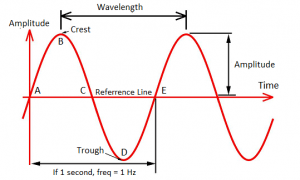
As we can see above the wavelength is the distance between two identical points on the curve exactly 360 degrees apart. The easiest representation is from peak to peak although not necessary. Your amplitude is the height of the wave. If you were listening to a single audio tone and turned up the volume, you would see the wave climb in height as the “amplitude” increased. If you changed the frequency of the tone, you would see the wave either expand out or shrink closer together. Frequency is the amount of times the wave repeats within a one second time frame. In WiFi, these waves are happening billions of times per second. Additionally we need to talk about phase. Phase is the difference in degrees between two waves that started at the same time with the same frequency. If you were to start one wave at 0 degrees and the other at 180 degrees you would have complete cancellation and they would be considered 180 degrees out of phase. Most people may not realize it, but this is the exact concept of noise cancelling headphones. Their main purpose is to take outside noise and cancel it by playing you the offending frequencies 180 degrees out of phase essentially muting them. See below…
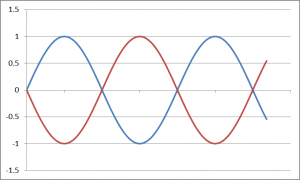
Current State – the current state of the signal is used to distinguish between 1’s and 0’s. This is slightly confusing since we are dealing with waveforms and it would be easy to assume that we are talking about current as in electrical current, but we are not. We are literally talking about a moment in time, currently the amplitude is high vs low as in ASK (Amplitude Shift Keying).
State Transition – In state transition the change of the signal is used to distinguish between 1’s and 0’s
Types of Keying Methods –
- Amplitude Shift Keying – varies the amplitude or height of the signal to represent vinary data and uses current state
- Frequency Shift Keying – varies the frequency of the signal to represent binary data. This also uses current state. One frequency can represent a 0 and another a 1. This is typically used in legacy deployments
- Phase Shift Keying – in this keying method, current state or state transition can be used. In state transition , different phase changes represent 0’s and 1’s, in current state, the value of the phase represents 0’s and 1’s during the symbol period.
- Symbol Period – period of time in which the current state of the signal is checked.
- Multiple PSK – when two or more phases are used. Four phases each can represent two binary values as opposed to one which shortens transmission times.
I went out and tried to find a concise video showing the keying methods and I believe the below video really explains it quite well. It isn’t in the context of WiFi but it is based on RF as it relates to AM/FM.
End of chapter review
In this chapter we took in a lot. If you think you are going to focus on one topic at a time per chapter, well you are incorrect. We are going to be absorbing a lot of material per chapter, so focus will be paramount. The entire reasoning behind this blog is as much to help me as it is to help you. I need the reinforcement. I already wrote out my notes in a notebook, I read the chapter, and then typed them out here (going back and researching anything I was unsure of). I know the notes won’t be perfect and I am more than happy to make any corrections, when they are noticed, so feel free to reach out. Leave comments if you enjoy what you read or want to leave feedback. Follow me on social media via the links on the page if you want to keep up to date on new posts as they come out and share if you think others will find this useful with the links below.
Thanks for reading!!!

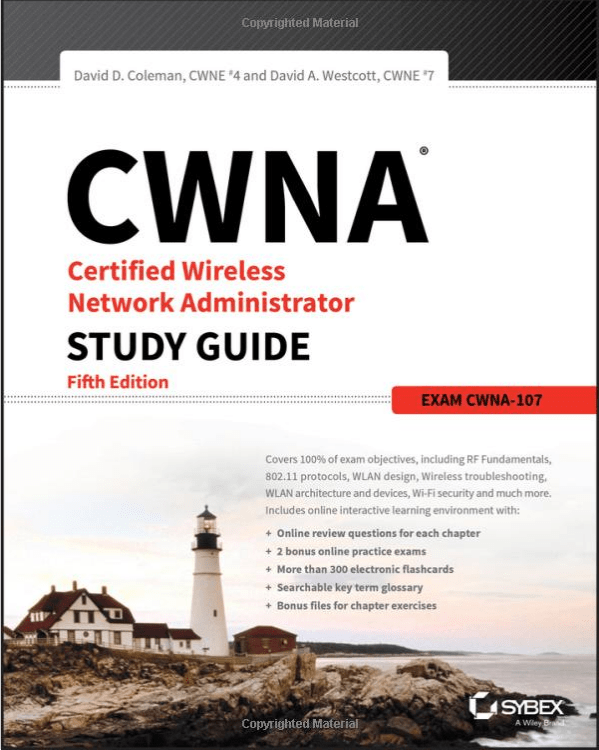
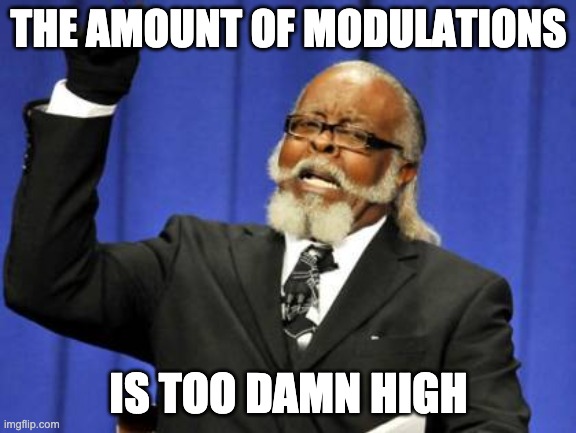
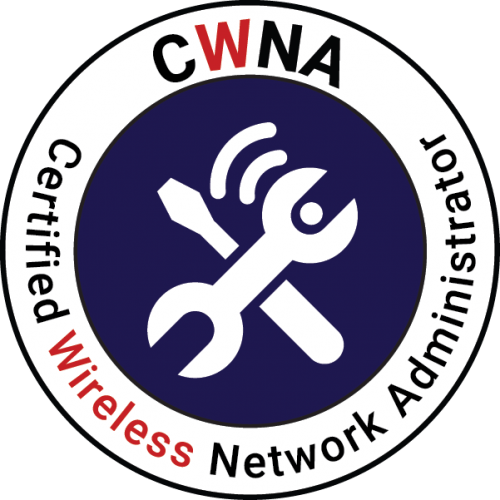
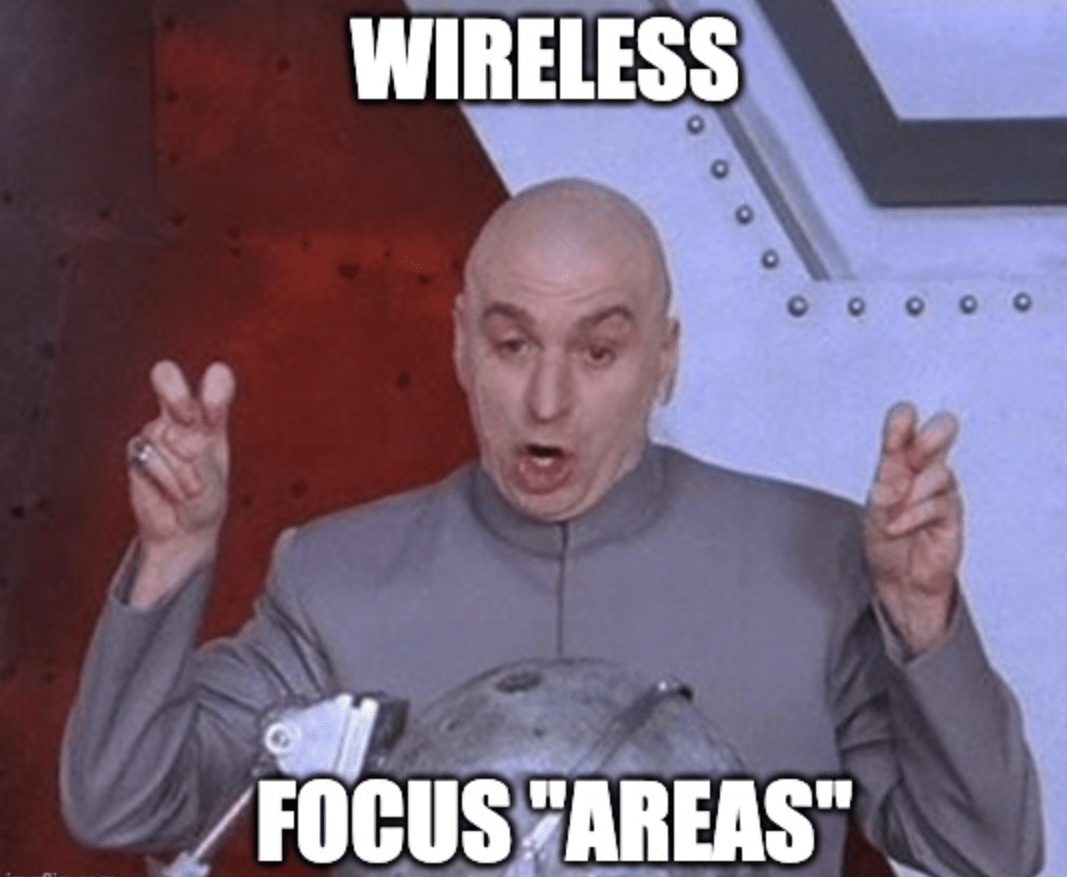





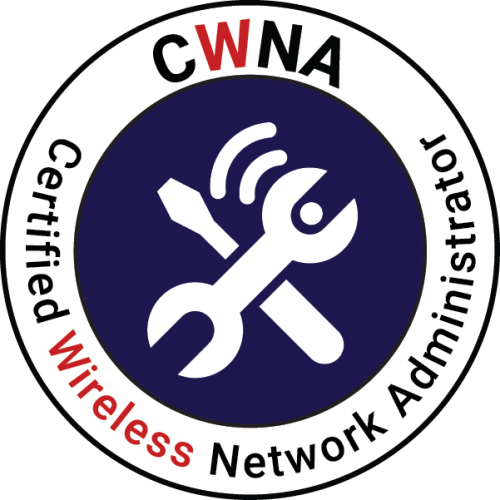
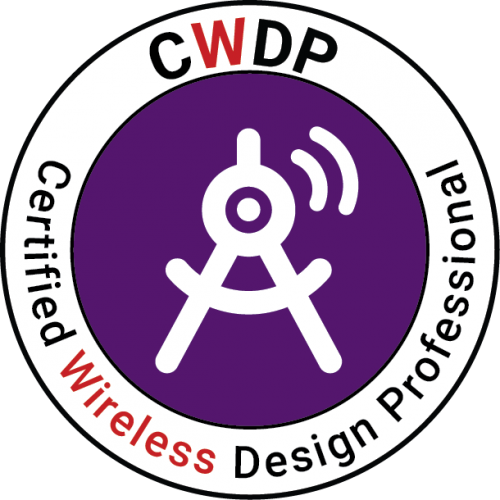



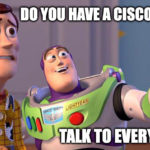


Following you! I’m on same path to CWNA
Glad to have you along for the ride Ed!
Great website Mike! I am currently recertifying for my CWNA, it is an excellent certification to start your journey in the vendor neutral wireless world
Thanks Alex, I’m looking forward to expanding my knowledge.
Thanks for your blog. That’s a great idea.
I was study CWNA cert last year but I didn’t finish…sorry.
I would like start again with your blog.
Thanks for all,
Congrats from Madrid-SPAIN
Javi, I don’t think there is a better compliment. I just woke up early for a study session and wasn’t feeling it. Now I am motivated! Let’s get it done.
This is a great blog! I have to start one myself, as I’m studying for CWNA as well. I’m a little further in the book, but it is a lot of information.
Keep the blog going, there’s already a lot of useful information in it.
Greetings from Bonaire, Dutch Caribbean
Thanks Francis, it is a lot of work to get it all out there, but it is worth it. Thanks for checking it out.
Remember. New version of cwna out in October. Probably last day to take 107 exam end November. Exam 108 will include wifi6. No mew book planned by the 2 Davids for 108. Please take you exam befire 107 id ob olete.
I am looking at roughly 60 days or so. End of June to mid July is the goal. Just depends on how much life gets in the way. I block out 9pm to 12pm every day to study and during the day if possible.
Like!! I blog frequently and I really thank you for your content. The article has truly peaked my interest.
Thanks for following along.